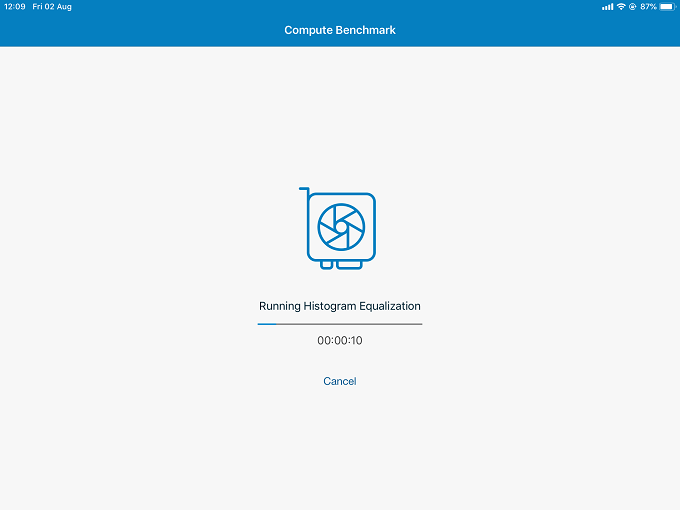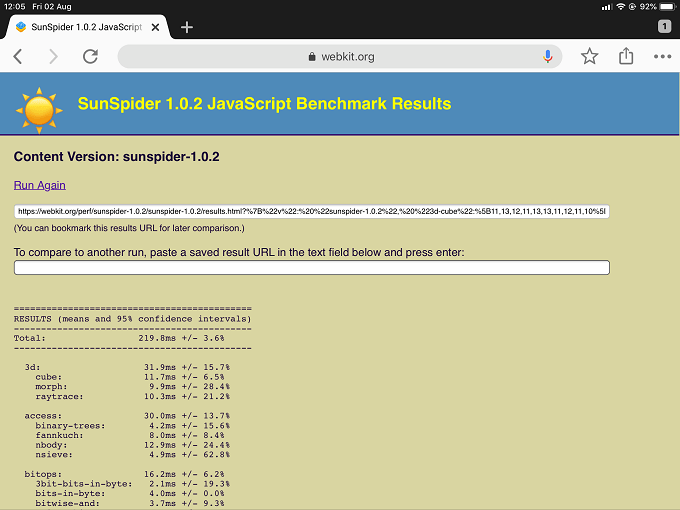Tablets and smartphones are quickly becoming the main daily computing device. In fact, for people who aren’t PC gamers or who don’t need to use an office suite, there are few reasons to own a laptop or PC these days. In a pinch you can even use something like the Samsung DEX and turn your phone into a desktop computer for a bit.
The only reason this is even possible is because the processors and graphics chips in our mobile devices are now desktop-class when it comes to performance. Well, not current desktop class. Just good enough to run desktop-grade apps like an office suite, full web browser and so on.

Thanks to this focus on performance, we’ve seen many benchmarking apps and tools come out over the last decade or so. These let you run tests on your device and then show you how well it’s done.
Why would you want this? For one thing, you can compare the results to other users who have the exact same model. So if there’s something wrong with your device, you can do an objective test to prove it. You can also check whether your device is performing better or worse after an operating system update.
Maybe you want to know if that new tablet or phone you’ve been eyeing is really worth buying compared to what you have.
AnTuTu (iOS & Android)

AnTuTu has long been a darling of phone and tablet reviewers. The program actually comes from China and was first released in 2011, shortly after the modern smartphone revolution began in earnest.
AnTuTu provides a single numerical score after testing your device. This score is composed of tests that look at several areas of device performance. This makes it pretty easy to see where specifically a device is having issues or has performance weaknesses.
The UX (user experience) score is particularly useful as it gives an indication as to how snappy the device is at day to day tasks. However, to the delight of the mobile device review industry, there seems to be a test for every component and metric of a smart device’s performance. This makes it easy to diagnose and compare your device to everything else out there.
Geekbench 4 (iOS & Android)

Geekbench is specifically marketed for its cross-platform nature. Besides running on Android and iOS, it’s also available for Windows, macOS and Linux.
Earlier versions of Geekbench were criticized for favoring ARM chips as found in mobile devices. This is not a problem when you want to compare devices using that architecture, but it’s not so great if you bring x86 processors into the mix. Luckily those issues have been largely resolved in version 4.
Geekbench is quite thorough and provides separate single-core and multi-core performance tests. It also has benchmark tests that aren’t purely synthetics, but tries to put realistic loads on the system.
What makes Geekbench nice is that you can compare something like a high-end tablet to a laptop. This can help you decide whether the tablet is powerful enough to run similar workloads as the laptop you’re currently using.
3D Mark (iOS & Android)

PC gamers know the name 3D Mark well. For decades it has been one of the key benchmarking tools to illustrate just how much horsepower your fancy computer kicks out.
Apart from that, 3D Mark software has always contained some pretty forward-looking features. Graphical technologies and techniques that are still years away from the mainstream. Not only does this push a system to the edge, as a good benchmark should, it gives us a taste of tomorrow’s graphics today. 3D Mark benches have been worth running just to look at the pretty pictures since day one.
Getting to grips with the various 3D Mark versions can be a little confusing. However, as long as you pay attention to the market segment 3DMark recommends for each benchmark, you’ll have numbers appropriate to your specific device.
It’s also a great way to show off just what your phone can do. Honestly, this is the prettiest benchmark of them all, for mobile devices.
Sunspider (Browser-Based)

Sunspider is an interesting benchmarking tool, because it isn’t tied to any one particular platform. It’s browser-based, which makes it platform agnostic. As long as the device in question can run JavaScript, it can run SunSpider.
This means we can do all sorts of interesting things with it. It also means the waters are somewhat muddied, because we are also testing browser performance. Even using the same browser on different platforms may introduce additional variation in performance that isn’t related to the raw power of the hardware. However, it is a real test of a specific application doing the same work on all machines.
It’s also a great way to see how much new hardware has improved, since the ability to run JavaScript spans across many generations of hardware.
The final big reason to use Sunspider is if you’re comparing different browsers on the same system or to compare browser updates. Mobile devices are largely used as web-browsing devices, so having a choppy experience is a big deal.
You should be aware that Sunspider is no longer maintained and it’s recommended to use the more recent JetStream. Yet, since there’s such a vast database of Sunspider test results, it remains a useful tool to compare devices across time and will remain so for quite a while.
Scream If You Want To Go Faster!
Thanks to these benchmarking tools, you too can now brag to your friends about how fast your latest phone is. Which is a good thing when you need to play mobile games to make up for your sudden lack of anyone to hang out with.
Jokes aside, it’s important to ensure you’re getting your money’s worth or if something is going wrong with your handset. Instead of having a nagging suspicion that something is amiss, you’ll have hard numbers proving it one way or another. Isn’t that worth the few minutes it takes to run a few benches?